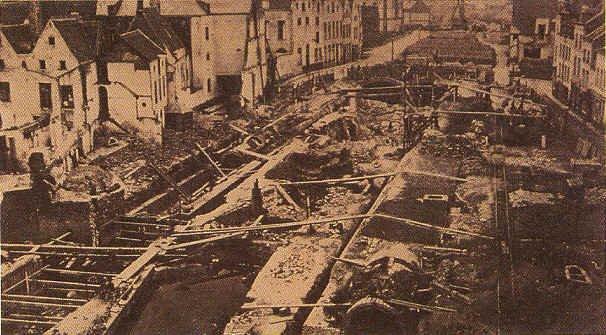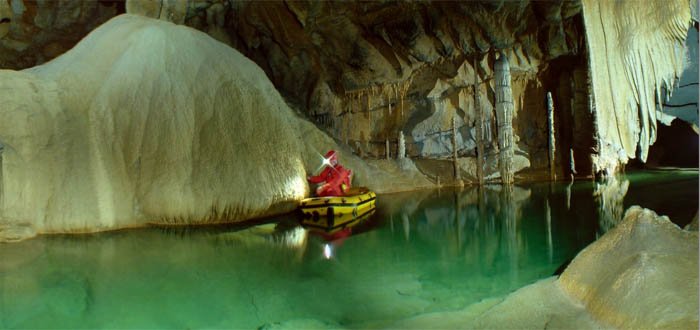Underground rivers have been the subject of folktales and mythology for as long as humans have been around. Greek mythology was especially filled with them- the rivers of the underworld included the Lethe, which could steal memory; Styx, barrier to the underworld and domain of the ferryman Charon; Acheron, greatest river of the underworld, and several more. Despite their frequent occurrence in mythology, however, they do exist in real life.

The entrance to the Puerto Princesa Subterranean River in the Phillipines. [Image source]
The overwhelming majority of naturally occurring subterranean rivers occur in karst landscapes. Karst landscapes are limestone dominated landscapes. I've written about them before. Limestone, as a carbonate rock, is actually somewhat water soluble. It also reacts with acids, and as rain is always slightly acidic due to absorbing CO2 in the atmosphere, it results in the majority of the world's caves being formed in karst terrain.
Given the huge numbers of caves in karst regions, it should be no surprise that most subterranean rivers occur in karsts. They can be carved by rivers or have the rivers break into and divert into the caves.
The most famous underground river is the Puerto Princesa Subterranean River, in the Phillipine national park of the same name.
Manmade subterranean rivers are also common. Cities are often built alongside rivers, but as they expand they often begin to pollute and grow over the rivers. The River Bievre in Paris is one example of this. Once a small river that fed into the Seine, it was diverted in medieval times to supply the fields of an abbey with water. More and more of the river was diverted over the years, until in the present day it's merely a trickle running into Paris' sewers. Another example is the Senne or Zenne River. Once the main waterway for the city of Brussels, it got so polluted and disgusting that it was covered up and later diverted. The old channels are now being used for trains.

The Covering of the Senne River. [Image source]
There's another major type of underground river as well- flowing aquifers. The Hamza River, which I wrote about recently, is an immense aquifer beneath the Amazon River. It's hundreds of kilometers wide and 4,000 meters below the surface. Despite its size, its flow rate is extremely low- it moves mere centimeters per year. This is because aquifers don't actually flow through caves. Instead, they're merely seeping through pore space in the rocks.
Subterranean rivers are more than just interesting, however- they're important signifiers of underground water quality. A huge portion of humanity is dependent on underground water supplies. Subterranean rivers are excellent test sites to determine water quality in underground water systems to determine their suitability for consumption. They're also highly vulnerable to human groundwater pollution. Agricultural runoff is a particularly bad offender. Though they seem remote and out of the way, taking care of these delicate ecosystems is important to all of us.

The Cross Cave River in Slovenia. [Image source]
This is the first of a series of posts on speleology, the study of caves. Part 2
*****************************
Bibliography:
https://en.wikipedia.org/wiki/Covering_of_the_Senne
https://en.wikipedia.org/wiki/Subterranean_river
http://mentalfloss.com/article/49004/8-underground-rivers
https://en.wikipedia.org/wiki/Zenne
https://en.wikipedia.org/wiki/Bi%C3%A8vre_(river)
http://www.bbc.com/news/science-environment-14693637
Guo, F., and Jiang, G., 2009, Nitrogen budget of a typical subterranean river in peak cluster karst area: Environmental Geology, v. 58, p. 1741–1748, doi: 10.1007/s00254-008-1673-6.
